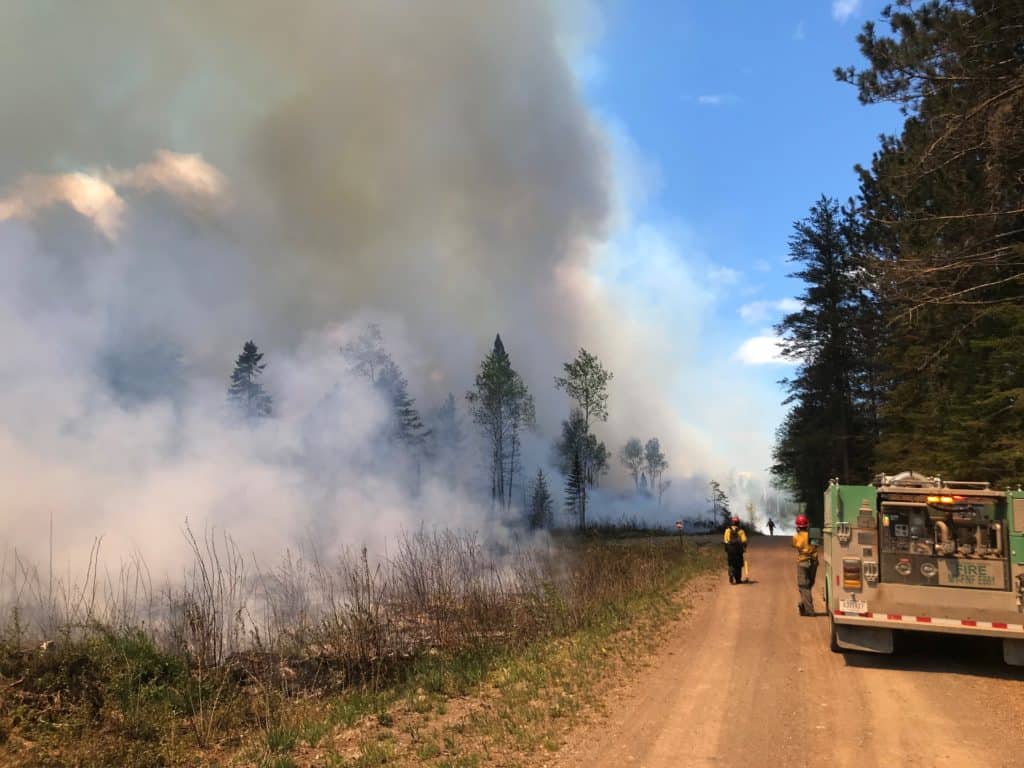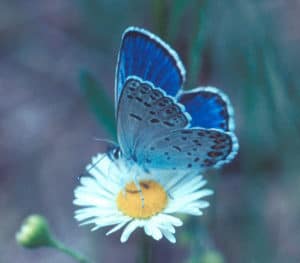
The Superior National Forest has had a successful spring season of prescribed fire, burning more than 3,600 acres on more than a dozen sites. The fires were conducted to create wildlife habitat, promote forest health, and reduce wildfire hazards for people.

Fires like those conducted south of Sawbill Lake as part of the Nabokov Blue project will help restore forest conditions that support endangered creatures, like the Nabokov Blue butterfly, designated in Minnesota as a species of special concern. Its host plant that the butterfly requires to reproduce is the Dwarf Bilberry, which can only survive in the type of forest openings created by regular fire. The Superior National Forest and The Nature Conservancy have been working to restore habitat for rare butterflies for several years.
Some of the fires were designed to remove thick understory brush and trees that can cause volatile wildfire conditions. For example, on Burntside Lake, the North School Section Prescribed Fire was “designed to continue the fuels reduction by removing needles and other surface litter and balsam fir to create and maintain a more open understory that will in turn reduce the potential for a wildfire to start and spread. Regular prescribed fire treatments also create a patchwork or mosaic of fire-resistant forest stands in the landscape that can reduce the intensity of future wildfires.”
Other fires were intended to burn up slash and other material left over from logging operations. The 694-acre Satellite Prescribed Fire near Isabella cleaned up woody debris to allow for the planting of tree species like pine and spruce.
Despite the benefits of fire, it’s not always possible to complete all planned burns in a year due to weather, staff availability, and other considerations.
“In our area, spring and fall are usually the seasons when specific conditions for a particular prescribed fire project are met,” the Superior National Forest says. “The season for implementation of a particular prescribed fire may be based on considerations such as controlling certain invasive plants when their life history makes them vulnerable to fire or avoiding the nesting period of a sensitive bird species.”
If favorable conditions continue, the Forest Service says it plans to do more prescribed fires in the weeks ahead, as well as preparing for the possibility of wildfires.
Local fire crews were supported on the fires by staff from across the country, including other National Forests, the U.S. Fish and Wildlife Service, and the National Park Service, as well as Smokejumpers and two interagency hotshot crews.
The Superior National Forest lists all prescribed fire plans on its website, and active fires are on the national wildland fire website Inciweb.

